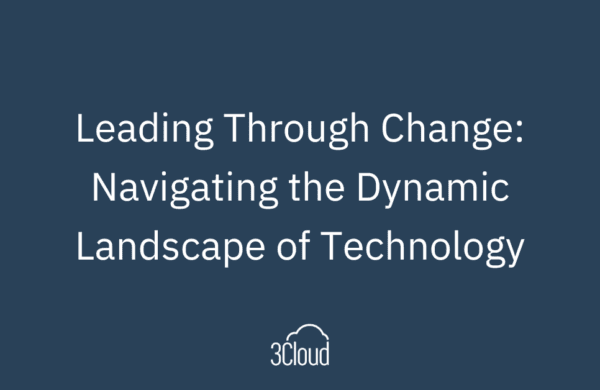These days, it seems almost every data and analytics presentation, webinar or whitepaper highlights the current explosion in data production. As an analytics professional, I find this growth exciting. It represents an opportunity to help clients extract more value from their data and to make better business decisions; to improve their ability to take advantage of market opportunities, to serve customers, and to advance their mission. But for organizations experiencing this growth, the data deluge can create uncertainty and breed frustration.

A potential client recently summed it up this way: “Our organization is data rich, but information poor. We’re creating more reports than ever before, and yet we’re still not able to give the business the information they need, in the format that they want, when they want it. We’re missing opportunities to enable our business because we just can’t keep up.”
Does this sound familiar?
Here’s a simple approach to move forward:
Assess
Take stock of your situation. Where are you succeeding? Where are you challenged? What do your end users tell you about your reporting and analytics systems? Are they using the system? If so, which reports or dashboards and how often? User satisfaction and user adoption are two metrics to measure the success of your reporting and analytics initiative.
Do you have the right systems in place to capture the data you’d like to report against and analyze? Do you have a robust and flexible data platform that can grow with the changing needs of your business? Do you have a team that can design and build analytics solutions that are compelling and effective in facilitating better decision making? Do you have a plan to support this initiative long term?
Envision
What does “good” look like to your organization? The answer reveals clues about where to focus your efforts. In some cases, “good” is simply a reliable system that provides trustworthy data – a “single version of the truth.” In other cases, for an organization further down the maturity curve, “good” might mean adding more advanced capabilities, like machine learning to analyze large data sets to identify patterns and/or provide predictions.
Act
Make your data and analytics initiative a first-class citizen in the organization by fixing the problems and eliminating the negatives. Bad data breeds mistrust, and slow reports and dashboards frustrate end users. Prioritize your efforts and take steps to address these issues.
Raise the bar and change the culture. Help decision makers see the benefit in making fact-based choices. Provide easy-to-use, relevant solutions and watch your initiative grow.
From there, create a cross-functional team to steer and shape the initiative. Measure success and reinvest in new capabilities to derive even more value from the modern business’s most important asset: data.
And lastly, evangelize. When you experience success, share it and celebrate it.
Companies that embrace a strategic plan to harness and utilize new data gain a leading edge. No matter what stage of development your data culture is in, we can help. BlueGranite leverages the latest technology to create a modern data platform customized to your needs. Contact us to learn more.




